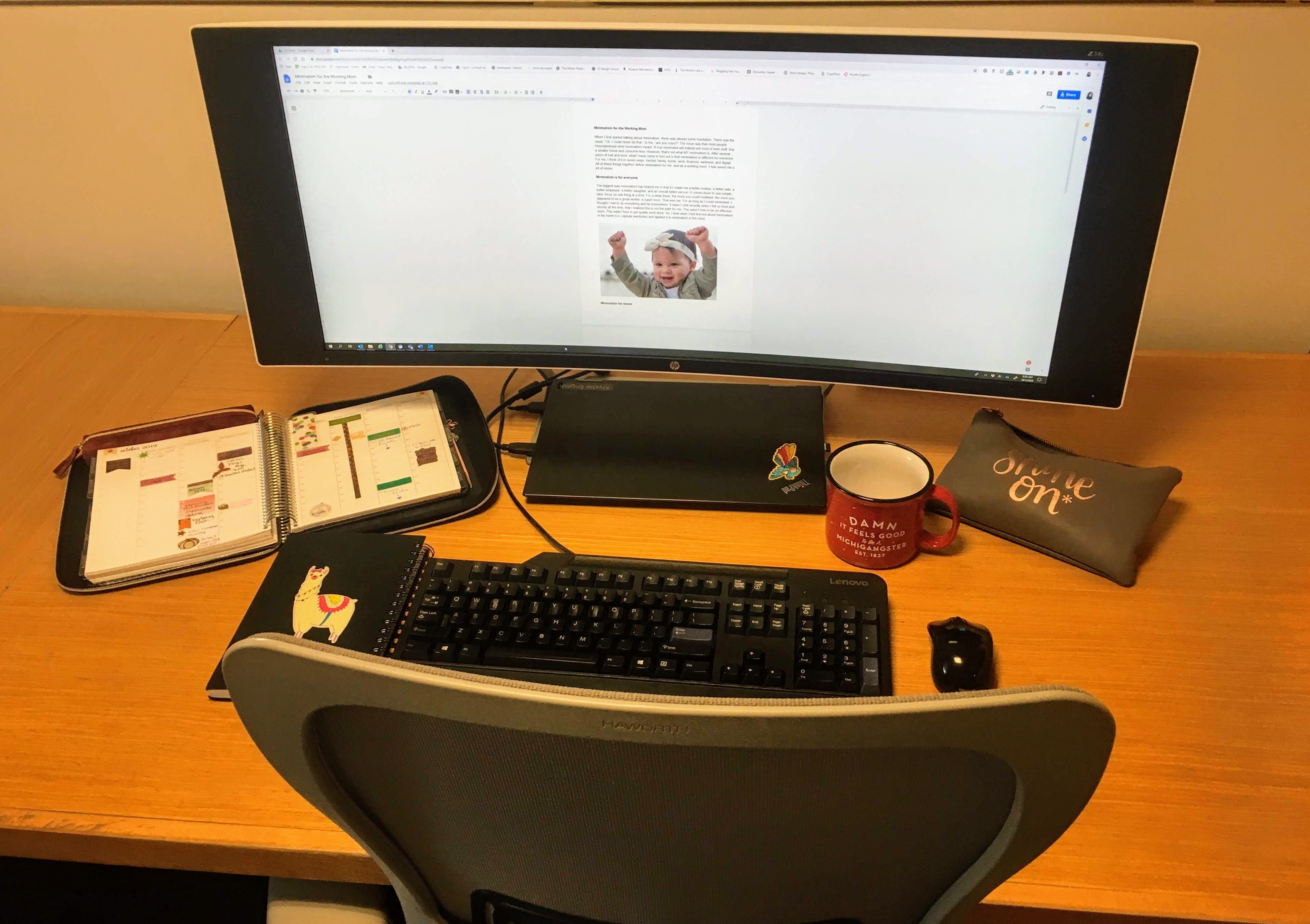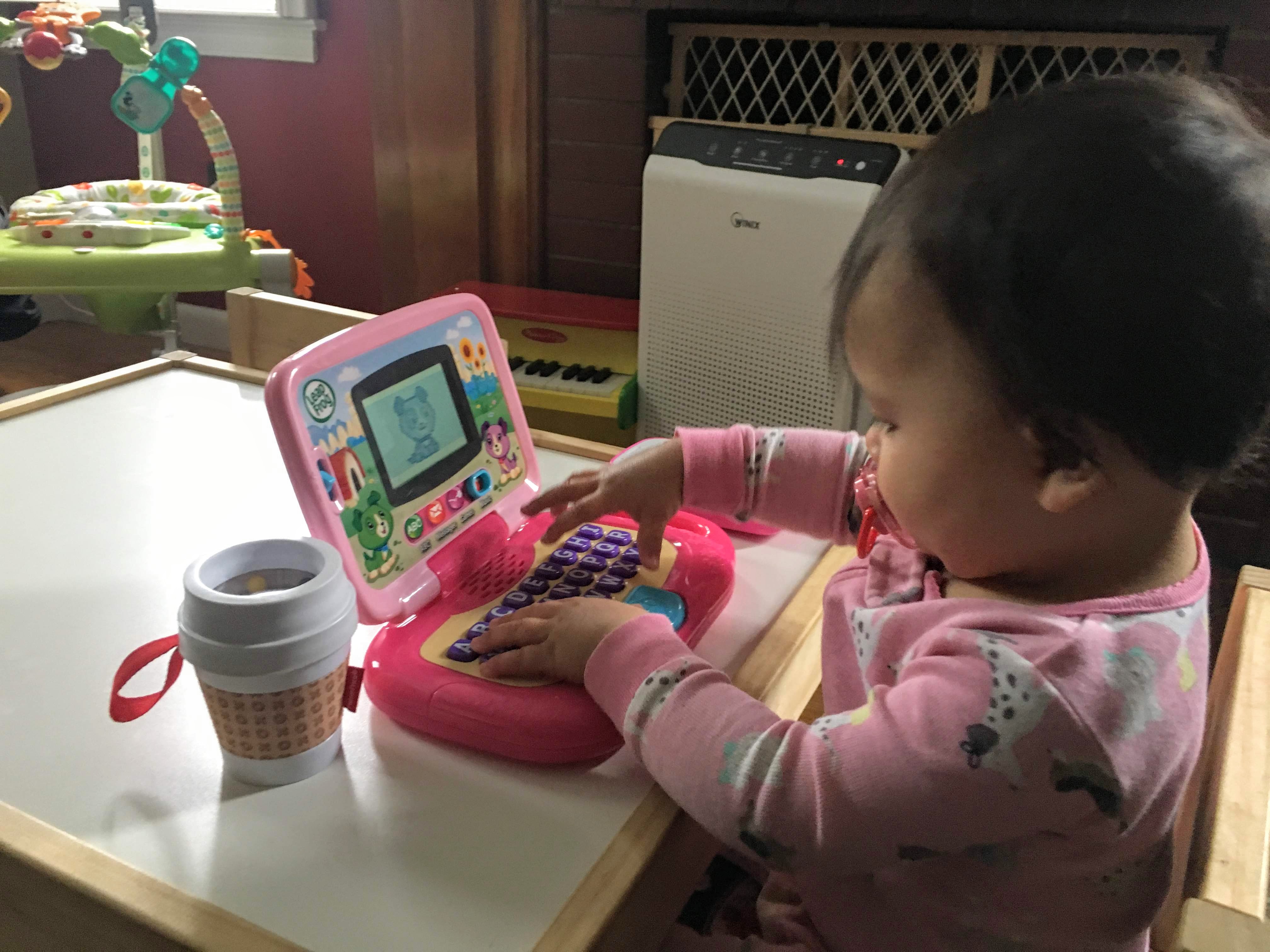When I first started talking to people about minimalism, they reacted with hesitation. There was the usual, “Oh, I could never do that!” to the “Are you crazy?”. The issue was that most people misunderstood minimalism, especially minimalism as a working mom. True minimalists consume and live with less. However, that’s not what MY minimalism is. After several years of trial and error, what I have come to find out is that minimalism is different for everyone. For me, I think that minimalism as a working mom can be broken down in seven ways:
- Mental: using meditation to clear my mind, so I can think and act thoughtfully
- Family: working on my relationships and being more honest with my feelings
- Home: being organized and decluttering, so we have more space to live and play
- Work: being agile and not holding on to things just to hold on to them
- Finances: working through where we spend our money and taking out the unnecessary
- Wellness: eating healthier foods with fewer ingredients and more whole foods
- Digital: using fewer apps, unsubscribing from email newsletters I don’t read, spending less time on the internet or on my phone, and watching less television
All of these things together define minimalism for me, and as a working mom, it has saved me a lot of stress.
Minimalism is for everyone
The most significant way minimalism has helped me is that it’s made me a better mother, wife, employee, and person. It comes down to one simple idea: focus on one thing at a time. For a while there, the more you could multi-task, the more you appeared to be a great worker, a super mom. That was me. I thought I had to do everything and be everywhere. It wasn’t until recently when I felt tired and moody all the time that I realized this is not the path for me. This wasn’t how to be an effective mom. This wasn’t how to get quality work done. So, I took what I had learned about minimalism in the home (i.e. capsule wardrobe) and applied it to my life as a working mom.
Minimalism for moms
What I found to be the most helpful was that I was learning to actually pay attention to my kids. Paying attention in the sense of playing and learning with them. Actually listening to my four-year-old making up stories and songs. What used to sound like gibberish from my one-year-old, I am now able to translate. “Apo pch, peass” means “Apple pouch, please.” There are so many amazing things I see and hear them do with much more attentiveness. Making myself learn how to focus on one thing, or in this case, one kid, at a time, has helped me to witness them learning and growing at a higher level. I’ve become more patient. Even when I get upset, I’m able to stop and take a breath before reacting, which wasn’t always the case. I can see the change in my older daughter, too. She’s learning how to control her feelings and is maturing every day.
Minimalism at work

I figured out that I could apply these principles at work. We are already on our way to being more agile at work, which means we don’t have assigned seating. There are a variety of seating options to choose from, depending on what you’re working on that day. Workspaces range from large meeting spaces to quiet focus-time areas. It has given me an understanding of what minimalism could be in a workspace. While I don’t have many personal effects, I’ve gotten around it by having the background of my laptop be a photo of my daughters. I have a small locker where I can keep a coffee mug and some files, but the rest of my “office” fits in a backpack. With minimalism ideas in mind, I am more organized, more productive, and less stressed. I can provide quality work, be more intentional with my choices, and be strategic in how I deliver. I am more patient with people and can handle multiple conflicting personalities with ease.
Minimalism at work and home
While I try to leave work at work and family business at home, as a working mom, the principles of minimalism with work and home life eventually converge. It comes down to having a routine schedule that’s flexible. Having processes in place to make you get through each morning while you’re trying to get everyone ready for their day. Getting yourself situated when you get into work. Wrapping things up at the end of the day. Greeting your kids when you get home from work or when they get home from school. Making a healthy, 30-minutes-or-less dinner with your family. Starting bath time at 7 p.m. and getting the kids in bed by 8 p.m. Having time with your spouse for an hour and then having a nightly routine that might include meditation and yoga. All of these things are done one step at a time with room for school conferences and fall festivals, dance classes and book clubs, volunteering and playdates.
What minimalism has given me, as a working mom, is my sanity. I can wake up each day, focus on myself, my family, my work, and then bring it back full circle.












